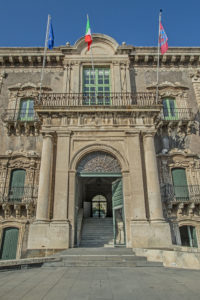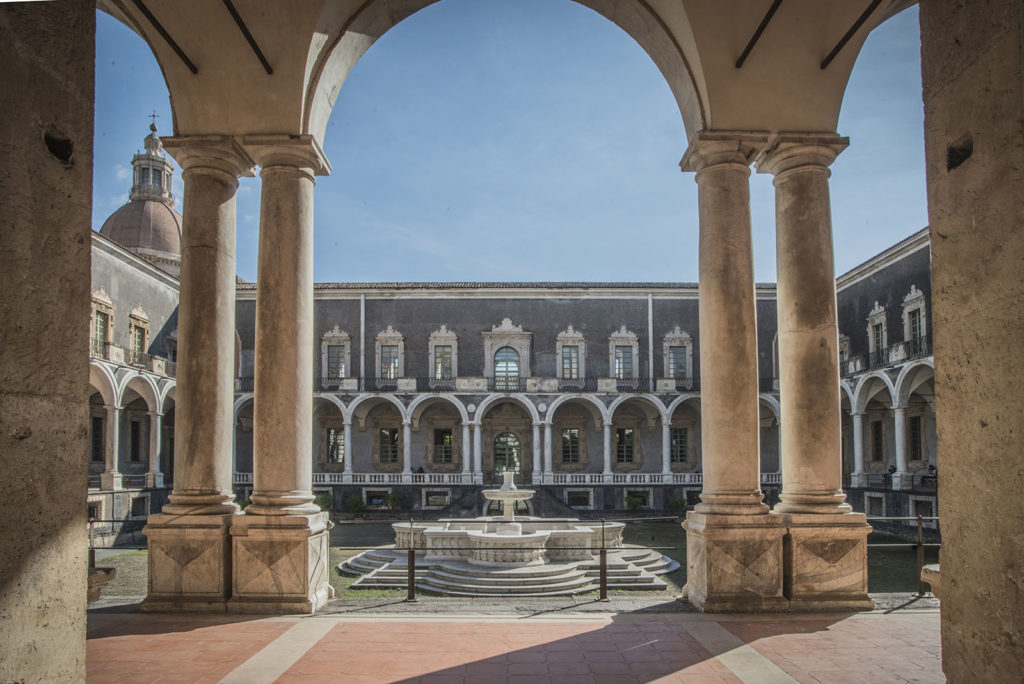 The Benedictine monastery of Catania, with its long history, is also known as “the city within the city”. Its large size and dozens of activities taking place inside make it seem like a small city, bordered by large walls and capable of interesting cultural exchange with the surrounding urban fabric.
The Benedictine monastery of Catania, with its long history, is also known as “the city within the city”. Its large size and dozens of activities taking place inside make it seem like a small city, bordered by large walls and capable of interesting cultural exchange with the surrounding urban fabric.
Since the 1970s it has been the seat of the Faculty of Literature, Language and Philosophy of the University of Catania.
Today the monastery is accessed via the surrounding wall through a majestic portal that leads into the large courtyard surrounding the Abbey, passing the main staircase in Carrara marble with ninety-five steps.
It is a remarkable piece of architecture with a white staircase, walls decorated with gypsum
bas-reliefs
and
stuccoes
that accentuate the play on light and shadow, thus creating an elegant two-toned effect.
It leads to the corridors that bring us to the monks’ cells and the two cloisters.
The first cloister, to the east, is surrounded by a splendid portico in white Syracuse stone raised on a dark base and enhanced in the centre by the caffeaos (coffee house). The second cloister was rebuilt after the earthquake of 1693 and features a stark contrast between the dark plaster wall and the fifty-two white marble columns on the lower storey.
the centre, the majestic marble fountain offers a focal point for the space.